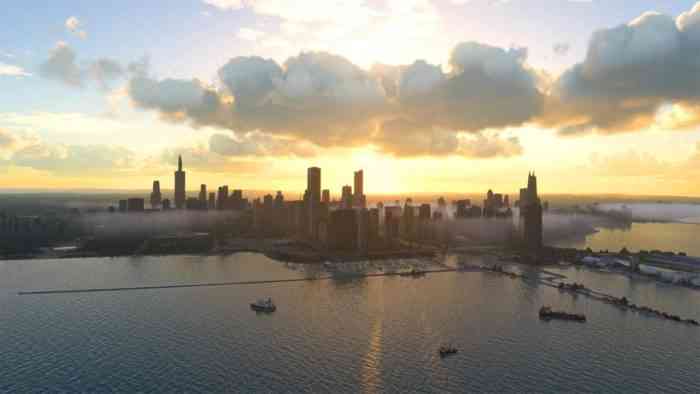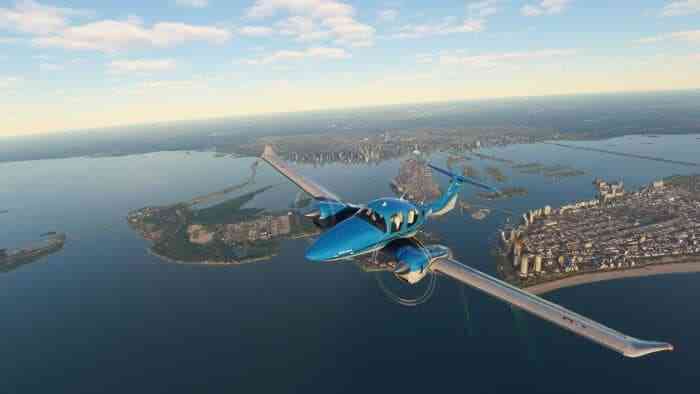Microsoft Flight Simulator 2020 – A Detailed Look at the Weather Systems
Microsoft Flight Simulator 2020 is on track for an August release and we couldn’t be more excited. For plane and flight aficionados, Microsoft Flight Simulator 2020 will be the must-play game of the year, if not the generation. The team at Asobo Studios, along with their partners, have done an incredible job including everything that a flight sim truly needs to be the best. I’ve had the privilege of playing the Microsoft Flight Simulator 2020 Alpha for the past month, and it is as incredible as it is daunting – there is a lot to consume and I’ve barely scratched the surface. I’ve also had the pleasure of discussing the games development with members of the development team – and their excitement is just palpable. If you’re interested in an overview of Microsoft Flight Simulator 2020, please check out our impressions piece. For this piece, I wanted to dive deep into Microsoft Flight Simulator 2020’s impressive weather and day/night systems. Make no mistake about it, the level of detail in Microsoft Flight Simulator 2020’s weather system is quite simply the best we have experienced in any game, period.
We’re in for Stormy Weather
Weather is an important factor to consider in regards to aviation. Pilots need to be able to handle all manner of weather conditions. While previous Microsoft Flight Simulator games have included weather conditions, what’s new is the depth to which these various weather conditions and phenomenon have been created for Microsoft Flight Simulator 2020. For example, clouds are no longer flat “billboard” style textures that just randomly appear. Now they are based on certain weather conditions, such as updrafts and temperature, which in term create true volumetric 3D models that evolve in real time. From clouds, you’ll get rain, and that includes rain droplets covering the plane and windows. Every single droplet of rain will roll across the planes window, simulated to react as it would in real life, based on the plane’s speed, wind condition, and other factors. It’s not just some visual trick or effect, it’s actual physics being used to create these realistic conditions. And with rain, and the right amount of sunlight, comes rainbows. Again, these rainbows are not just textures that pop up at random – they will only appear if the right weather conditions occur. Colder temperatures will bring snow, and the snow will actually accumulate on the world below your wings. And if the temperature is cold enough, your plane will start to accumulate ice. The ice build up is a very cool effect, but it’s not just there for show, the build up of ice will impact the planes performance, so you’ll need to do whatever necessary to properly de-ice the plane.

In addition to all manner of weather conditions, you’ll also experience a true day/night cycle. And the night life in Microsoft Flight Simulator 2020 is an absolute spectacle. The cities come to life, lighting up as they naturally would. You’ll see cars driving the roads with their headlights on, you’ll see houses with their porch lights on, you’ll see street lamps. Outdoor stadiums will shine from their massive flood lights. Overhead, you could catch a glimpse of the moon and the stars – both of which are positioned as they would in the real world. In fact, the only objects you won’t see in the night sky are the other planets, at least not yet. During my interview with the developers, I asked them about the possibility of seeing restaurants like McDonald’s with their iconic golden arches lighting up at night. They said that while all the buildings are based on the map data provided by Bing Maps, they have no intention of adding more detail to individual businesses. Their main reason would be the added complexity of businesses constantly changing, moving, and closing down – it would take too much work to maintain that level of detail. For now, the focus is to continue adding more airports to the game as well as other game enhancements. Microsoft Flight Simulator 2020 is pretty open to the community to mod, so it’s entirely possible that ambitious gamers could improve the facades of specific businesses.
Developer Insights
During my interview with the developers, I asked them how extreme the weather conditions could get. Would we see weather phenomenon such as hurricanes, tornados, and hail? And the answer was yes, at least to the first two. In fact, the developers told me a story about how some of their testers have actually become in-game storm chasers. They’ll hear about actual storms in the real world and then pursue them in game. But how does that actually work? One of the most impressive additions to Microsoft Flight Simulator 2020 is the fact that all the weather in-game is pulled from real world data in real time. In other words, if you’re flying in your hometown and it’s snowing outside, it’ll be snowing in-game. Every weather condition will be simulated, except they did note that hail was not yet developed in-game, but could be something they’ll add in a future update. It’s worth noting that flying in some weather conditions is essentially impossible, so for those cases, avid in-game storm chasers will need to turn down some of the game’s realism to avoid weather-related crashes. In regards to the real world weather data – only the current data is accessible to players. At this point, no historical weather data will be available – however, the developers did note that in the future, they might be able to allow gamers to utilize weather data that was available from the games inception, just not prior to it. One final note worth mentioning, the real world weather data is completely optional, and gamers will also have the ability to set their own weather conditions in game.

It’s a rare occurrence that we devote an entire article to a game’s weather and day/night systems, and that’s just a testament to how incredibly detailed Microsoft Flight Simulator 2020 will be when it launches in August. The ability to fly planes in any weather condition is an impressive feat, but to pull actual real world weather data and convert it to an in-game experience is incredible and simply unrivaled in the gaming world. Microsoft Flight Simulator 2020 is gearing up to be one of the best looking games of the year, and part of that is due to the level of complexity the various weather and day/night systems that have been included. We’ll have our full review on Microsoft Flight Simulator 2020 when the game launches later this month.
Thank you for keeping it locked on COGconnected.
- For amazing videos, head over to our YouTube page HERE.
- Follow us on Twitter HERE.
- Our Facebook page HERE.
- Our Instagram page HERE.
- Listen to our podcast on Spotify or anywhere you listen to podcasts.
- If you are a fan of cosplay, check out more of our cosplay features HERE.